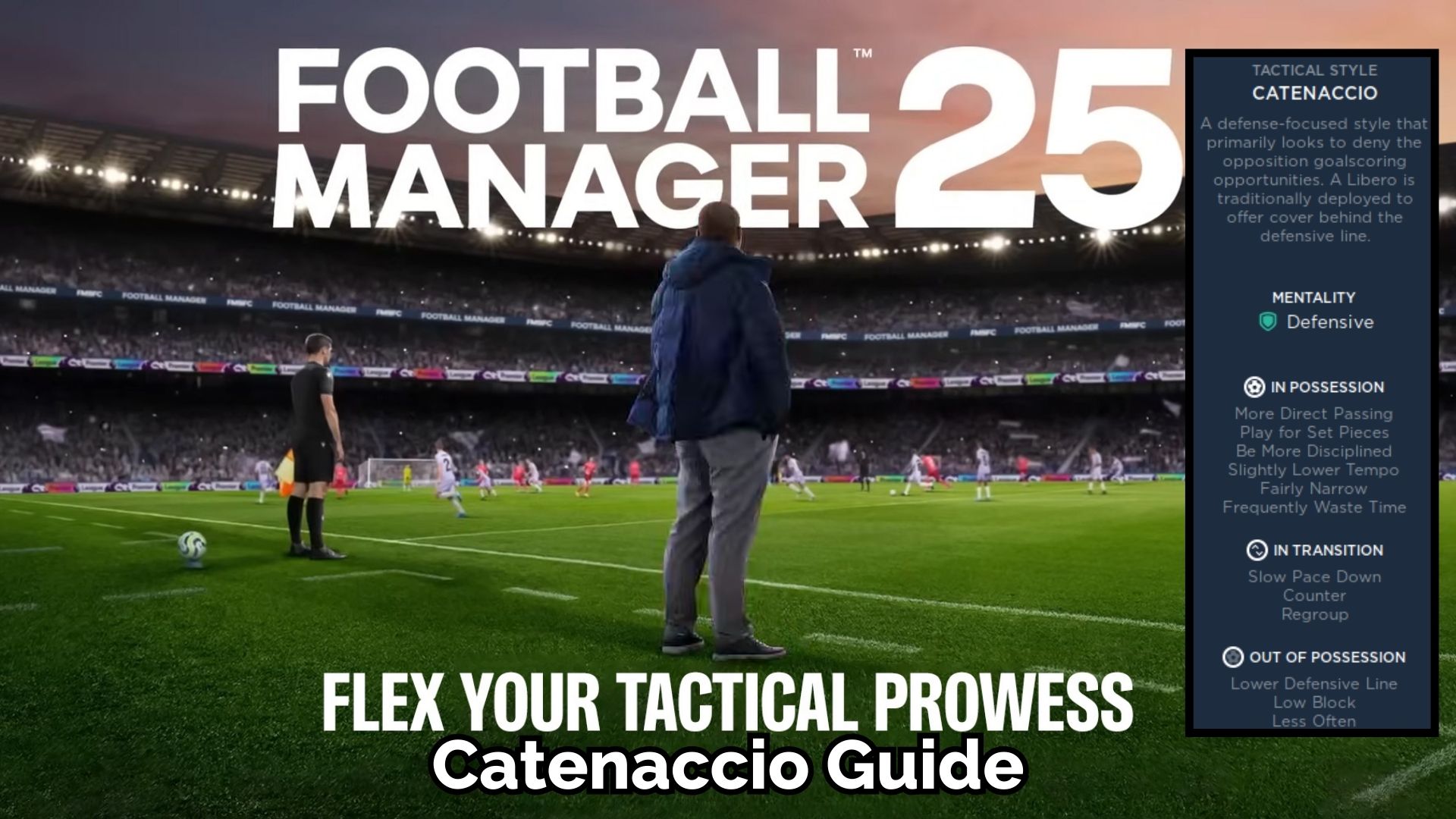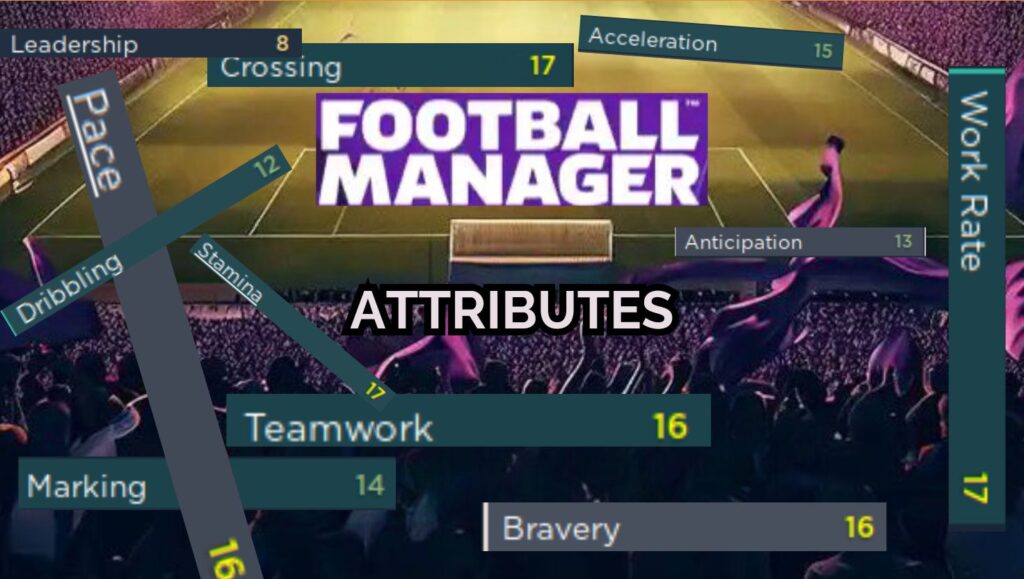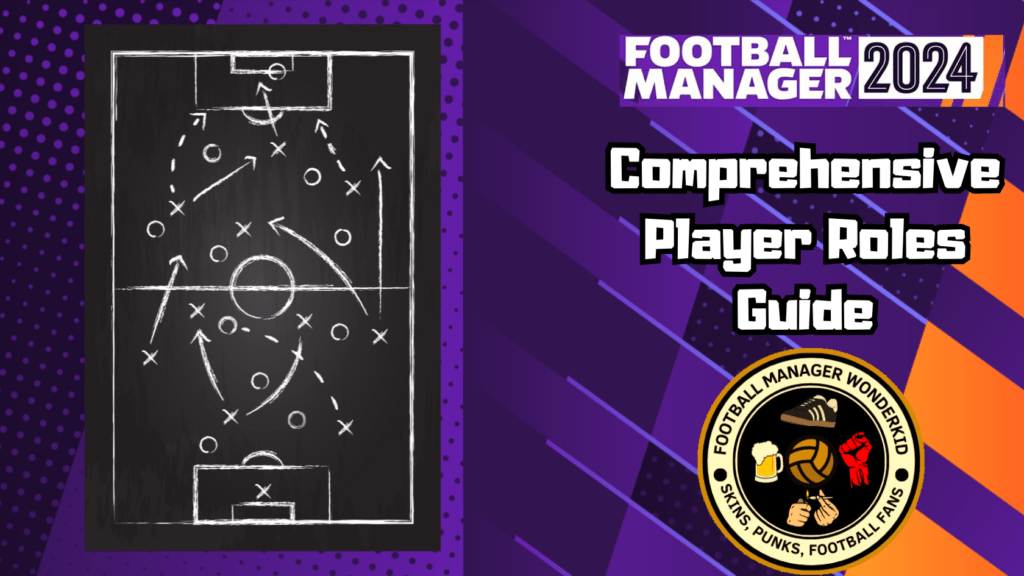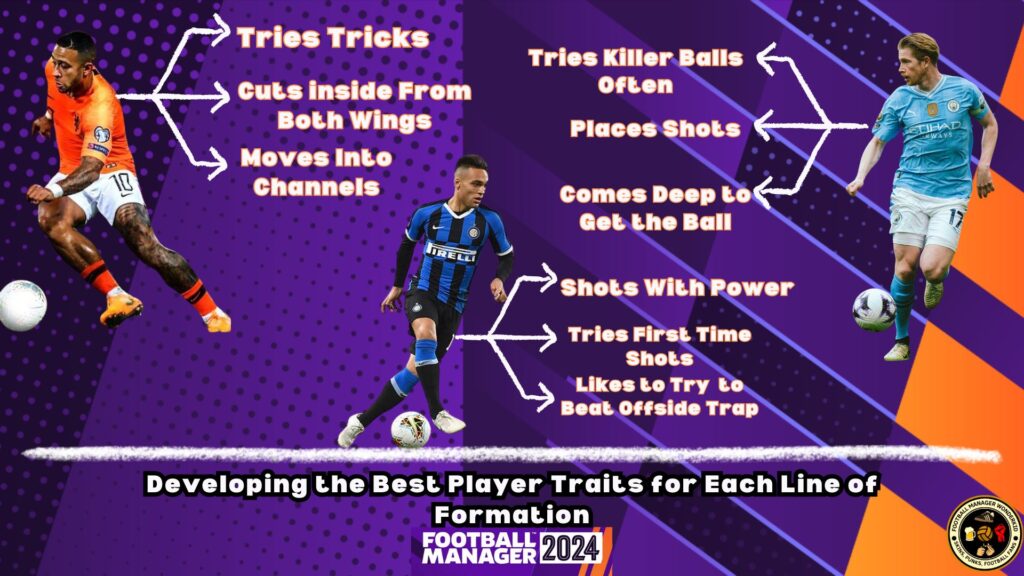Catenaccio, an Italian term for “bolt,” is a tactical style emphasizing defensive solidity and organization. This approach has deep roots in football history, particularly in Italy, and has been adapted by various teams and managers.
In Football Manager, this tactical style can be effectively utilized to achieve competitive success, especially for teams with limited attacking options. Below, we will explore the nuances of catenaccio within FM24, its historical context, implementation strategies, and training regimens.
Catenaccio Football Manager – What You Need to Know
- Catenaccio focuses on strong defensive organization and counter-attacking strategies.
- Originating in the 1930s, it was popularized by managers like Helenio Herrera.
- Effective formations include 5-4-1 and 4-1-4-1, designed to maximize defensive stability.
- Key roles include the libero, central defenders, and versatile wing-backs.
| Tactical Focus | Defensive solidity and counter-attacking |
|---|---|
| Historical Origin | Developed by Karl Rappan in the 1930s, popularized by Helenio Herrera in the 1960s |
| Formation | Typically employs a 5-3-2 structure |
Historical Context of Catenaccio
Catenaccio originated in Switzerland in the 1930s but gained prominence in Italy through managers like Helenio Herrera and Nereo Rocco. Herrera’s Inter Milan, during the 1960s, exemplified this style with a robust defense led by a sweeper (libero) and quick counter-attacks.
The team’s success included three Serie A titles and two European Cups, showcasing the effectiveness of catenaccio at the highest levels of football.
Other notable practitioners include Giovanni Trapattoni, renowned for his defensive strategies at Juventus, and José Mourinho, whose teams often exhibit catenaccio principles.
Notably, during his time at Inter Milan, where they won the Champions League in 2010, Mourinho showcased how this tactical philosophy could yield silverware.
Diego Simeone at Atlético Madrid also employs a modern interpretation of catenaccio, emphasizing defensive organization and counter-attacking football.
Catenaccio in Football Manager 24
In FM24, catenaccio is characterized by a defensive mentality, a low block out of possession, and a slightly lower tempo in possession.
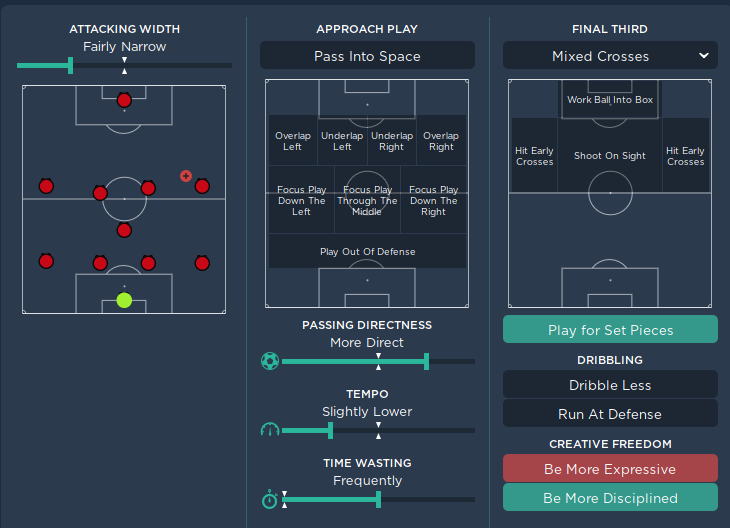
This tactical style is ranked seventh among various tactical styles available in the game. Such a setup allows teams to absorb pressure while looking for opportunities to counterattack quickly.
The low block is akin to a fortress, designed to repel attacks while waiting for the opportune moment to strike back.
As teams implement catenaccio, they often configure their tactics to absorb pressure and exploit counter-attacking opportunities. This strategic approach can turn a seemingly defensive setup into a potent weapon against more offensive teams.
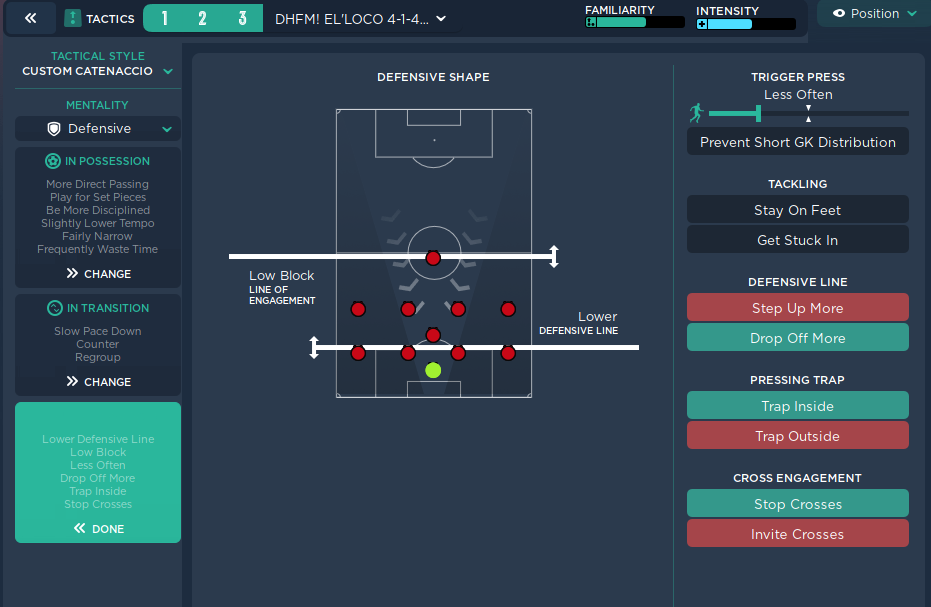
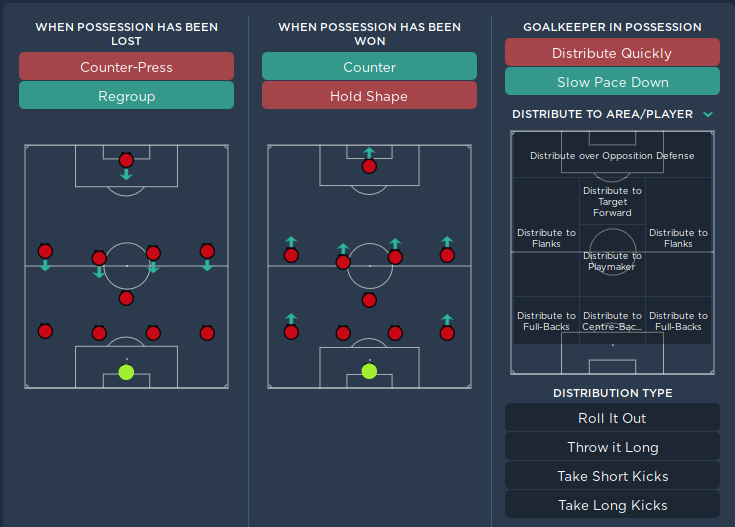
With the right player roles, catenaccio can be a double-edged sword, allowing for both strong defense and swift counterattacks.
By implementing a low block, teams can frustrate opposition attackers, forcing them to take risks that can lead to counter-attacking chances. This duality makes Catenaccio a favored choice among managers who prefer a more strategic approach to football. The emphasis on defensive solidity, combined with an eye for opportunistic strikes, can yield impressive results, especially against possession-dominant teams.
Catenaccio: Key Tactical Metrics
Analyze the statistical strengths of Catenaccio across defensive strategies and counter-attacking efficiency.
Defensive Mentality
Stat: Teams using Catenaccio concede 30% fewer goals on average compared to high-pressing systems.
Focus: Positional awareness and discipline.
Low Block
Stat: Average possession in defensive third is 60% higher than typical balanced setups.
Focus: Compact structure and space denial.
Counter-Attacking
Stat: Successful counter-attacks result in 1.8 goals per game on average.
Focus: Quick transitions and forward runs.
Legend:
Defensive Metrics
Tactical Effectiveness
Implementing Catenaccio Tactics
Successful implementation of catenaccio requires a focus on specific player roles and formations. Recommended structures include the 5-4-1 and 4-1-4-1 formations, which are designed to maximize defensive stability while providing opportunities for quick counterattacks. Each formation works as a safety net, offering protection against relentless attacks while preparing to spring forward at a moment’s notice.
Managers should prioritize formations that align with the principles of catenaccio to maximize their defensive effectiveness. Each formation requires players who are skilled in their respective roles to ensure the strategy is executed flawlessly.
The right player attributes can transform a tactical plan into a well-oiled machine, capable of withstanding pressure and striking back effectively.
Recommended Formations for Catenaccio
The most effective formations in catenaccio include the 5-4-1 and 4-1-4-1, which provide a solid defensive structure. Each formation works best when specific player roles are filled, ensuring that the defensive philosophy is upheld throughout matches. For instance, the 5-4-1 formation allows for a tight backline, reducing gaps for opponents to exploit, while the wing-backs can transition quickly during counter-attacks.
In a 5-4-1 formation, five defenders keep a tight grip on the back, while the wing-backs support both defense and attack. The 4-1-4-1 formation, on the other hand, features a defensive midfielder who shields the backline, providing additional support during counterattacks. This layered approach can be the difference between victory and defeat, especially against high-pressing opponents.
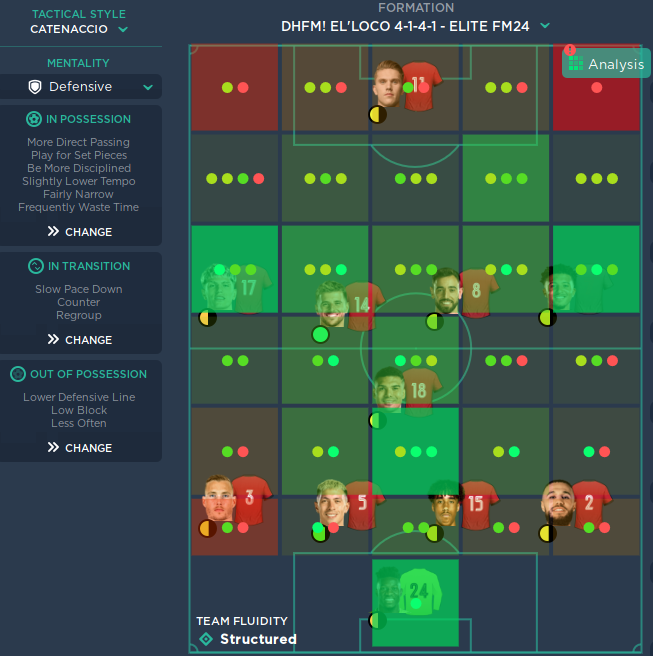
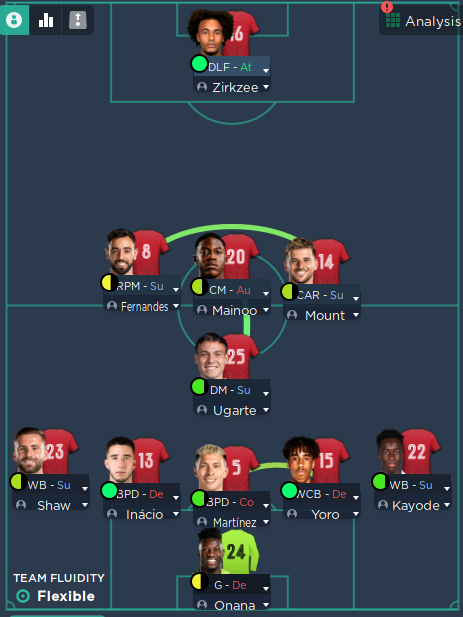
Player Roles and Skills in Catenaccio
Key player roles within the catenaccio system include the libero, central defenders, and wing-backs, each requiring specific skills for effectiveness. The libero plays a crucial role, providing cover behind the defense while initiating counterattacks. This role can be likened to a quarterback in American football, directing play from the back and ensuring the team remains organized.
Central defenders must be disciplined and robust, excelling in marking and tackling. Wing-backs need versatility, capable of supporting both defensive and attacking plays, while a defensive midfielder disrupts opposition attacks and transitions quickly to offense. Each player’s contributions create a symbiotic relationship that allows the catenaccio system to function harmoniously.
Pros and Cons of Catenaccio
The strengths of Catenaccio include strong defensive organization and the ability to minimize goals conceded. This approach works particularly well against teams that dominate possession, allowing for quick counter-attacking opportunities. It can often frustrate opponents, turning their aggression into vulnerability, and enabling the catenaccio team to capitalize on mistakes.
However, catenaccio is often criticized for being overly defensive or boring. It requires players with high tactical awareness and discipline and may struggle against teams adept at breaking down solid defenses. The balance between defense and offense is delicate, and when mismanaged, can lead to a stagnant style of play.
Training Regimen for Catenaccio
Implementing catenaccio effectively requires a focused training schedule that prioritizes defensive drills, counter-attacking drills, and tactical awareness sessions. Defensive drills should enhance team shape, positioning, and marking responsibilities, creating a strong foundation upon which the tactical approach is built.
Counter-attacking drills focus on quick transitions from defense to offense, capitalizing on opponents’ vulnerabilities. Regularly reviewing match footage can also improve players’ understanding of their roles within the system. This meticulous preparation ensures that players are not only skilled but also mentally prepared to execute the catenaccio strategy on match day.

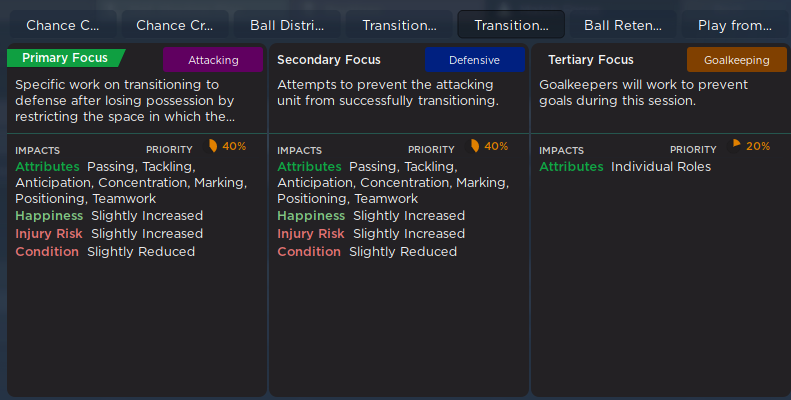
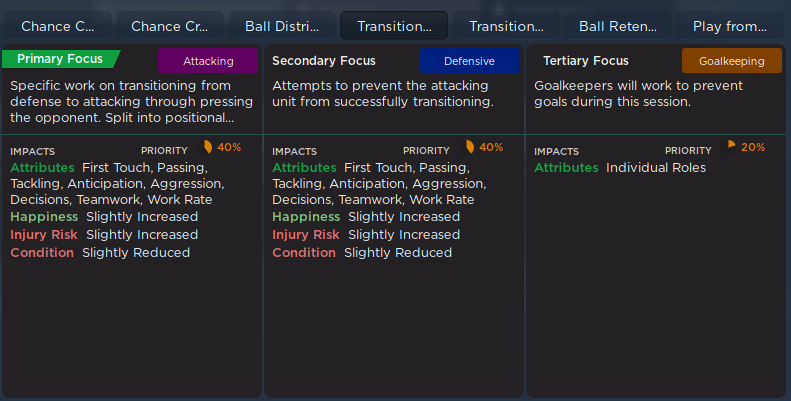
Catenaccio Tactical Style – Great for Boring Managers
Catenaccio remains relevant in modern football management, particularly in simulations like FM24. By focusing on defensive solidity while maintaining the ability to counterattack effectively, managers can achieve success even with less dominant teams.
FAQ Section
What is Catenaccio in football?
Catenaccio is a tactical style that focuses on defensive organization and counter-attacking football.
How did Catenaccio evolve over the years?
It originated in Switzerland and gained prominence in Italy, being refined by various managers.
What are the best formations for implementing Catenaccio?
The 5-4-1 and 4-1-4-1 formations are recommended for their solid defensive structure.
How can I effectively train players for a Catenaccio system?
Focus on defensive drills, counter-attacking drills, and tactical awareness to ensure players understand their roles.

